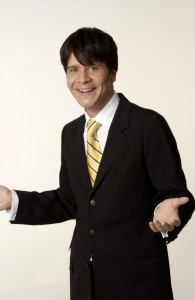Pfizer, the multinational pharmaceutical giant, has become increasingly intentional about shaping its culture. You can see evidence of Pfizer’s commitment in Ian Read’s letter to stakeholders the year after he became CEO:
Tag Archives: corporate culture
“Connection Culture” Book is Now Available!
 I am excited to announce that my latest book, Connection Culture: The Competitive Advantage of Shared Identity, Empathy and Understanding at Work is now available!
I am excited to announce that my latest book, Connection Culture: The Competitive Advantage of Shared Identity, Empathy and Understanding at Work is now available!
Connection Culture includes inspiring stories of great leaders who created connection cultures, scientific evidence that people and organizations need connection cultures to thrive, and descriptions of ways to connect that include attitudes, uses of language and behaviors. Written for busy leaders with little time to waste, Connection Culture is concise, inspiring, and practical.
Here’s a few of the wonderful reviews Connection Culture has received:
“A great leadership guide for leaders at every level.”
–Frances Hesselbein, President and CEO, The Frances Hesselbein Leadership Institute
“This is more than a great read; Michael’s connection strategy is a game changer for leaders.”
–Vernon Clark, Admiral, U.S. Navy (Ret.), Former Chief of Naval Operations
“Connection Culture provides ideas, actions, and pathways that servant leaders can use to not only enhance performance, but more importantly to build a strong culture.”
–Howard Behar, Former President, Starbucks International
To learn more about the book and to purchase, please visit www.connectionculture.com/book.
What Corporate Culture is Best for Change?
As seen on Fox Business and SmartBlog on Leadership
Consider this: few of the 500 largest corporations from 50 years ago exist today. They failed to change and became irrelevant, left behind by emerging competitors more in tune with the market.
How is it possible that so many top companies made this same fatal mistake? The answer may lie in a very simple explanation. Humans run corporations, and humans have a biological aversion to change.
Closing Your Company’s “Leadership Gap”

The Office Cast, Photo Courtesy of NBC
Historically, leaders have relied on their internal networks and intuition to assess employee engagement and strategic alignment. Tom Peters and Robert Waterman called it “management by wandering around” or “MBWA” in their classic book In Search of Excellence.
Just as intuition once tricked us into believing that the world was flat and the sun rotated around the earth, it is a flaw of human nature that most leaders are mistaken in their assessment of the engagement and alignment of people they lead. They don’t recognize employee engagement and alignment problems until they feel the pain from underperformance or face reality in the form of poor results from an employee engagement survey.
Article on Pixar’s Culture Featured in Economic Times
 Pixar’s leadership team has discovered the secret to consistently creating great films, and it has nothing to do with merely hiring great talent (although they do that too). The secret can be summed up in one word: connection.
Pixar’s leadership team has discovered the secret to consistently creating great films, and it has nothing to do with merely hiring great talent (although they do that too). The secret can be summed up in one word: connection.
An article I wrote on the topic has been featured in the Economic Times, India’s premier daily business publication. Be sure to read Animated Leadership: How Catmull & Co. Created a Culture that Consistently Makes Great Films and share your thoughts in the comments.
What lessons from Pixar’s culture will you apply to your own organization?
When “Failure Is Not an Option”
Some years ago I ran into the director Ron Howard at our local Starbucks. I said hello and told him how much I enjoyed the movie “Apollo 13,” which, in case you didn’t know, he directed.
“Apollo 13” is a remarkable movie. It captures the story of one of NASA’s finest moments, when the NASA team’s extraordinary willpower, energy and creativity snatched the Apollo 13 crew from the jaws of death after an electrical malfunction impaired the spacecraft’s guidance and oxygen systems. Gene Kranz, flight director for the Apollo 13 mission, led the rescue effort. During one of the movie’s best moments, Kranz (played by actor Ed Harris) rallies the troops and declares with resolve that “failure is not an option.”
Feel Lonely and Left Out at Work?
Recently, I’ve sensed more people feel lonely and left out at work. With years of layoffs, those who remain carry greater workloads. This crowds out time to connect with colleagues. Managers are also stretched and have less time to connect with the people they are responsible for leading. When I ask people at the seminars I teach which element of a Connection Culture — Vision, Value or Voice — they would like to increase in their workplace culture, it’s nearly always Voice. One result of this is that there has been a decline of connection, community and the spirit of unity in organizations.
Don’t Miss “All Hands on Deck: Building a Culture of Ownership”
I’m a big fan of Joe Tye. He understands the importance of culture and has tremendous wisdom about values-based leadership. His new book entitled All Hands on Deck: 8 Essential Lessons for Building a Culture of Ownership sounds wonderful. Although I’ve not read it yet, I plan to. Joe has a special offer if you purchase All Hands on Deck this week. You can learn about it at this link and be sure to watch the video of Joe talking about his new book while you’re there.
Webcast with Tim Sanders, Author of “Saving the World at Work”

On Friday, January 23 at 12:00 PM Eastern Time, I hosted a 30 minute webcast with Tim Sanders, Author of the newly released book Saving the World at Work. Tim also wrote two other outstanding books entitled The Likability Factor and Love is the Killer App. Tim has deep experience in cutting-edge businesses and marketing. He was the Chief Solutions Officer at Yahoo! and later their Leadership Coach. Prior to his senior positions at Yahoo!, Tim created and led the Yahoo! ValueLab, an in-house “think tank” which delivered futuristic insight to the company’s partners and clients. To hear the webcast click here.




